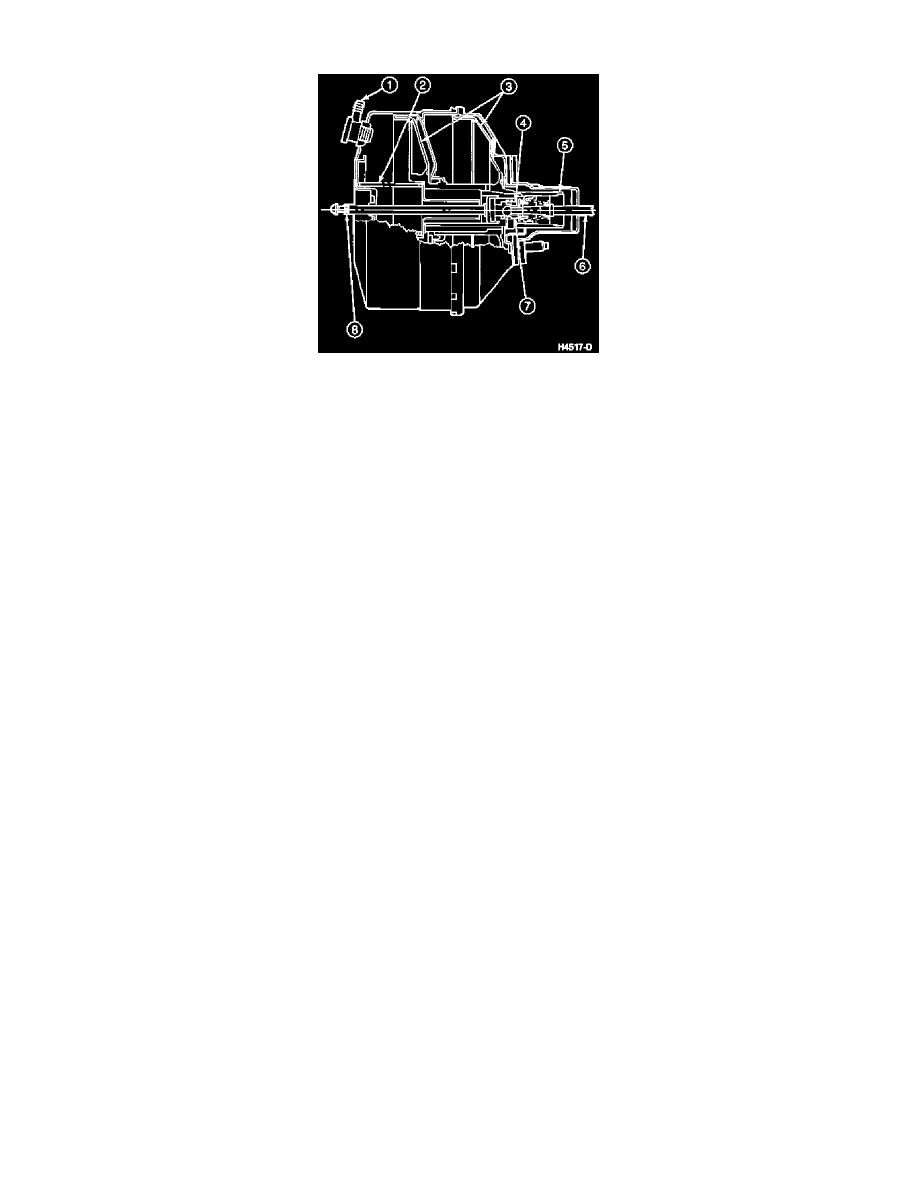Explorer 2WD V6-245 4.0L (1994)

Vacuum Brake Booster: Description and Operation
Item
Description
1.
Vacuum Hose Connection to Intake Manifold (Part of 2005)
2.
Return Spring (Part of 2005)
3.
Tandem Power Diaphragms (Part of 2005)
4.
Vacuum Port Closed Brakes On (Part of 2005)
5.
Filter (Air Inlet) (Part of 2005)
6.
Brake Pedal Push Rod (Part of 2005)
7.
Atmospheric Port Open Brakes On (Part of 2005)
8.
Master Cylinder Push Rod (Part of 2005)
PURPOSE
In vehicles powered by gasoline engines, vacuum boosters make use of the vacuum produced in the intake manifold to apply additional force to the
master cylinder push rod.
OPERATION
A vacuum booster is a container whose inner space is divided by a diaphragm into two separate chambers. The brake pedal push rod enters on one side,
and the master cylinder push rod exits on the other.
There are three valves that control the vacuum in the booster. The check valve opens to allow the intake manifold vacuum to evacuate the booster. When
it closes, it holds the vacuum in the chambers. The equalizer valve links the two chambers. When it is open, the vacuum in the chambers can equalize;
when it closes, the chambers are separated. The vacuum bleed valve functions to reduce the amount of vacuum in chamber B when boost is required.
As the brake pedal push rod moves forward, its motion closes the equalizer valve. This isolates chambers A and B, but they are still under vacuum. As
the brake pedal push rod moves farther ahead, a port in the brake pedal push rod begins to line up the ports in the sleeve. This vents chamber B to the
outside and reduces the amount of vacuum in chamber B. With more vacuum in chamber A and less in chamber B, the diaphragm is forced forward in
the direction of the master cylinder push rod, providing a boost.
The vacuum bleed valve is not just an open/close valve. A spring located at the forward end of the brake pedal push rod allows the push rod and the
sleeve to slide back and forth in relation to each other as the brake pedal is activated. This opens and closes the vent in such a way that only the required
amount of vacuum is drawn on. Hard braking bleeds off more vacuum, producing more boost. Light braking generates less boost. Once the level of boost
corresponds with the applied pedal force, the bleed valve closes and holds that level.
